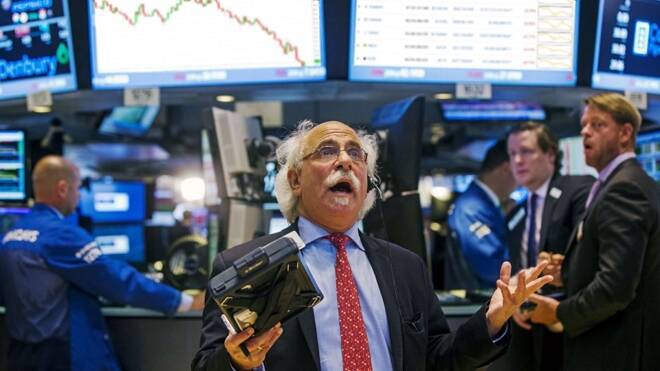On Wednesday, U.S. equity markets suffered their worst selloff since last February. Volatility spiked 44%, trading at levels last seen in March. Treasury yields retreated slightly with 10-year bond yields sliding 10 basis points from a 7-year high. Growth stocks were hit hardest with a selloff in Tech companies dragging the Nasdaq Composite down 4.1%. The Dow Jones Industrial Average and S&P 500 were not far behind falling 3.15% and 3.29% respectively.
Advertisement
Advertisement
Is it the beginning of the end?
Published: Oct 11, 2018, 07:21 GMT+00:00
On Wednesday, U.S. equity markets suffered their worst selloff since last February. Volatility spiked 44%, trading at levels last seen in March.
Has the Great Bull Market reached its end?
So many voices may begin suggesting that the longest bull market in history has come to an end. However, we experienced a worse selloff last February when the S&P 500 fell more than 10% in – “correction territory” during seven trading days. Back then the blame fell on strong economic data after wage growth grew 2.9%, suggesting that inflationary pressures were building, and the Fed would need to tighten monetary policy faster.
This time around it doesn’t seem a lot different. The only difference is that the reaction to higher interest rates was a little delayed. Bond yields have spiked 40 basis points on the 10-year Treasuries since the beginning of September. This has called into question the valuation of many growth stocks, particularly Tech. It shouldn’t be very surprising to see this kind of reaction when the required return of equity, a key component in equity valuations, soars in a short time frame.
So far, we may describe the selloff as profit taking with many investors reconsidering their asset allocation weightings in their portfolios. Some investors will also be watching key technical levels, given that the S&P 500 is testing the 200 days moving average. This key support level has been tested three times in 2018 and managed to bounce again higher. However, a close below for two or three days may intensify the selloff for a couple of more days.
“The problem, in my opinion, is Treasury and the Fed. The Fed is going loco and there’s no reason for them to do it. I’m not happy about it,” said U.S. President Donald Trump
While I agree with President Trump that Wednesday’s selloff is the fault of the Fed, he should be reminded that the trade war he started with China and re-imposing sanctions on Iran is also to blame. His actions helped to build inflationary pressures and the Fed cannot stand still when it sees the economy overheating. A steeper selloff in equity markets will probably lead to a pause in hiking rates, but the Fed will be more concerned about the overall economic performance than just equity prices.
Now it’s up to the earnings season which kicks off on Friday to convince investors that earnings are still robust and the outlook is rosy. If corporate America paints a gloomy picture due to trade disputes, higher import prices, a stronger dollar, and other variables, this will confirm that stocks have topped out for 2018.
Disclaimer: The content in this article comprises personal opinions and should not be construed as containing personal and/or other investment advice and/or an offer of and/or solicitation for any transactions in financial instruments and/or a guarantee and/or prediction of future performance. ForexTime (FXTM), its affiliates, agents, directors, officers or employees do not guarantee the accuracy, validity, timeliness or completeness, of any information or data made available and assume no liability as to any loss arising from any investment based on the same.
About the Author
Advertisement
